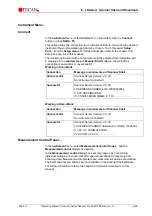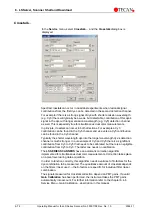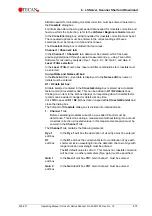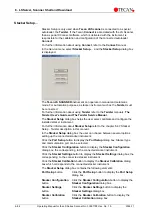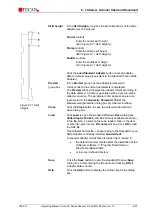
6. LSServer, Scanner Shell and Download
6-78
Operating Manual for the LS Series Scanner No. 30001798 Rev. No. 1.5
2004-11
Crosstalk…
In the
Service
menu, select
Crosstalk…
and the
Crosstalk
dialog box is
displayed:
Spectral crosstalk can occur in dual label experiments when residual signal
contributions from the first dye can be detected in the second detection channel.
For example if there is a strong signal of dye with shorter emission wavelength
(e.g. Cy3) there will typically be a weak, but detectable, contribution of this dye’s
signal in the dye with longer emission wavelength (e.g. Cy5) detection channel
as well. This is especially true for simultaneous dual color measurements.
In principle, crosstalk can occur in both directions. For example a Cy3
contribution can be found in the Cy5 channel and vice versa a Cy5 contribution
can be found in the Cy3 channel.
Typically the shorter wavelength dye into the longer wavelength dye’s detection
channel is much stronger. In our example of Cy3 and Cy5 there is a significant
contribution from Cy3 to Cy5 that needs to be calibrated, but there is a negligible
contribution from Cy5 to Cy3. The latter one needs no calibration.
The
LS SERIES SCANNERS
have an automatic correction algorithm
implemented for simultaneous dual color measurements. Correction takes place
on a pixel level during data acquisition.
In order to function correctly, this algorithm needs a valid set of K-factors for the
dye combination to be measured. The quantitative amount of crosstalk depends
on the filters / laser used
→
the K-factors are specific for individual filter / laser
combination.
The signals measured for crosstalk correction depend on PMT gains. If a valid
Gain Calibration
has been performed, the instrument takes the PMT gains
automatically into account. For further information refer to the chapter 6.4.6
Service Menu - Gain Calibration…description in this manual.






